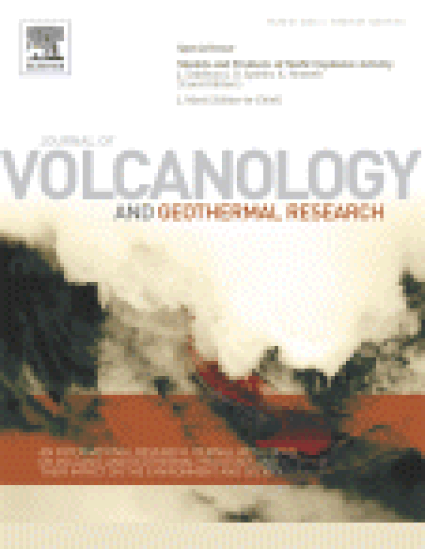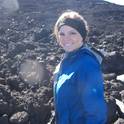
Article
The Architecture, Eruptive History, and Evolution of the Table Rock Complex, Oregon: From a Surtseyan to an Energetic Maar Eruption
Journal of Volcanology and Geothermal Research
(2009)
Abstract
The Table Rock Complex (TRC; Pliocene–Pleistocene), first documented and described by Heiken [Heiken, G.H., 1971. Tuff rings; examples from the Fort Rock-Christmas Lake valley basin, south-central Oregon. J. Geophy. Res. 76, 5615-5626.], is a large and well-exposed mafic phreatomagmatic complex in the Fort Rock–Christmas Lake Valley Basin, south-central Oregon. It spans an area of approximately 40 km, and consists of a large tuff cone in the south (TRC1), and a large tuff ring in the northeast (TRC2). At least seven additional, smaller explosion craters were formed along the flanks of the complex in the time between the two main eruptions. The first period of activity, TRC1, initiated with a Surtseyan-style eruption through a 60–70 m deep lake. The TRC1 deposits are dominated by multiple, 1-2 m thick, fining upward sequences of massive to diffusely-stratified lapilli tuff with intermittent zones of reverse grading, followed by a finely-laminated cap of fine-grained sediment. The massive deposits are interpreted as the result of eruption-fed, subaqueous turbidity current deposits; whereas, the finely laminated cap likely resulted from fallout of suspended fine-grained material through a water column. Other common features are erosive channel scour-and-fill deposits, massive tuff breccias, and abundant soft sediment deformation due to rapid sediment loading. Subaerial TRC1 deposits are exposed only proximal to the edifice, and consist of cross-stratified base-surge deposits. The eruption built a large tuff cone above the lake surface ending with an effusive stage, which produced a lava lake in the crater (365 m above the lake floor). A significant repose period occurred between the TRC1 and TRC2 eruptions, evidenced by up to 50 cm of diatomitic lake sediments at the contact between the two tuff sequences. The TRC2 eruption was the last and most energetic in the complex. General edifice morphology and a high percentage of accidental material suggest eruption through saturated TRC1 deposits and/or playa lake sediments. TRC2 deposits are dominated by three-dimensional dune features with wavelengths 200–500 m perpendicular to the flow, and 20–200 m parallel to the direction of flow depending on distance from source. Large U-shaped channels (10–32 m deep), run-up features over obstacles tens of meters high, and a large (13 m) chute-and-pool feature are also identified. The TRC2 deposits are interpreted as the products of multiple, erosive, highly-inflated pyroclastic surges resulting from collapse of an unusually high eruption column relative to previously documented mafic phreatomagmatic eruptions.
Keywords
- phreatomagmatic,
- Surtseyan,
- maar,
- base surge,
- Table Rock Complex
Disciplines
- Geology and
- Volcanology
Publication Date
March 1, 2009
Citation Information
Brittany D. Brand and Amanda B. Clarke. "The Architecture, Eruptive History, and Evolution of the Table Rock Complex, Oregon: From a Surtseyan to an Energetic Maar Eruption" Journal of Volcanology and Geothermal Research Vol. 180 Iss. 2-4 (2009) Available at: http://works.bepress.com/brittany_brand/3/
